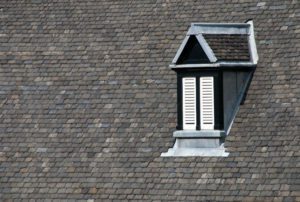What Lies Beneath: 3 Things Located Beneath Your Roofing Shingles
 Many homeowners think their roof is made up of nothing more than a series of overlapping asphalt shingles. Although the shingles are certainly the most important element, they are hardly the only one. Roofing incorporates a number of other key components to provide lasting waterproof results.
Many homeowners think their roof is made up of nothing more than a series of overlapping asphalt shingles. Although the shingles are certainly the most important element, they are hardly the only one. Roofing incorporates a number of other key components to provide lasting waterproof results.
Find out more about three lesser known features often found beneath shingles.
Roofing Felt
Roofing felt is a ubiquitous feature of virtually every single shingle roof. You may have heard roofing felt called names like roofing tar paper, roll roofing or simply underlayment. Roofing contractors install roofing felt directly on top of the wooden roofing deck, where it provides a base layer to which the shingles are then attached.
Two main components make up roofing felt: a fabric-like base and a protective top coating. The base may either be made from materials like wood cellulose or recycled fabric pulp, or it may be comprised of synthetic materials like fiberglass or polyester. In either case, this based is coated with an asphalt-based substance capable of repelling water while still permitting the fabric to “breathe.â€
Roofing felt is used mainly as an extra measure of protection against any water that manages to penetrate beneath your shingles. This is especially important for homes in cold climates, where melting snow and ice greatly increase the amount of water on the roof at certain times of year.
Roofing felt also protects the deck of your roof while work is being done on it. Even when the roof is stripped of shingles, the felt helps protect the vulnerable wooden deck from damage caused by either workers or the elements.
Drip Edge
The edges of a roof represent one of its most vulnerable parts, thanks to the prevalence of what are known as blow-under leaks. Your roof may experience these leaks during rain storms that are accompanied by windy conditions. The wind is often capable of driving the rain right back up below the shingles attached to the roof’s edge, leading to rot and other forms of structural damage.
To protect against blow-under leaks, install drip edges. A drip edge is a piece of sheet metal manufactured in the shape of the letter T. Roofers attach this metal to the terminal edge of the roof using galvanized roofing nails. They then place shingles all the way to the edge so that they overlap with the top of the drip edge.
The stem of the drip edge’s T prevents water from blowing back up underneath the shingles, yet the flat top of the drip edge is just as important. It provides stability to the shingles above, giving them added strength. This is especially important in winter, when the weight of ice can easily cause the overhanging edge of unsupported shingles to break off.
Ice and Water Shield
When you live in a cold climate — a climate where snowfall is a regular part of winter — you must take especial precautions to keep your roof safe from water damage caused by ice dams. An ice dam is, as its name would suggest, a tall ice barrier that forms at the edge of the roof.
As ice and snow melt from higher up, the ice dam prevents the water from running safely off the roof. Instead it pools up behind the dam, where it will soon begin finding ways to penetrate beneath the shingles. An ice and water shield is a waterproof strip that gives a roof an extra degree of protection against such ponding water.
Understanding the elements that make up a roof will help you ensure that your roof withstands the worst the elements can throw at it. For more information about the components of your roof or to discuss issues leaks and roofing repairs, contact the experts at Burke’s Roofing.
